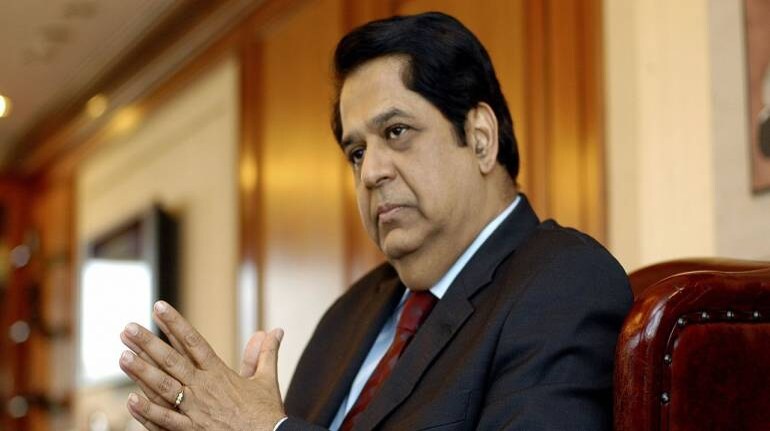The loan recast exercise will provide a temporary relief to the banking sector. But, if the economic recovery gets delayed, these loans could turn NPAs after the two year period
The Reserve Bank of India (RBI)-appointed expert panel headed by veteran banker KV Kamath has done exactly what it was mandated to do—offer a short-term relief to banks in order to postpone the bad loan crisis.
The details available so far indicate that a majority of companies across sectors can benefit from this scheme. However, the question is what if the economic recovery takes longer and companies fail to recover even with the loan recast.
While the resolution framework could offer a near-term relief to stressed borrowers and banks, a large scale restructuring could lead to a rise in non-performing assets (NPAs) going ahead, experts cautioned.
Who benefits from the resolution framework?
The committee has recommended financial ratios for 26 sectors which could be factored in by lending institutions while finalising a resolution plan for a borrower.
The 26 sectors selected by the panel for the resolution framework are: Power, construction, iron and steel manufacturing, roads, real estate, trading wholesale, textiles, chemicals, consumer durables/FMCG, non-ferrous metals, pharma, logistcis, gems and jewellery, cement, auto components, hotels, mining, plastic products manufacturing, automobile manufacturing, auto dealership, aviation, sugar, port and port services, shipping, building materials, and corporate retail outlets.
For sectors where ratios have not been specified, lenders can make their own assessment, the panel said.
In the past, the banking system has attempted multiple loan recast mechanisms, including corporate debt restructuring (CDR), joint lenders forum (JLF), and Strategic debt restructuring (SDR). However, in February, 2018, the central bank withdrew all such schemes with Insolvency and Bankruptcy Code (IBC) becoming the main option for banks to resolve stressed assets. However, it is a fact that most of the restructured loans have turned bad in later stages.
A big one-time relief
The RBI’s decision to introduce a one-time resolution framework for loans affected by the Covid-19 pandemic is a big relief to most borrowers who would have otherwise defaulted on their bank loans in the post-moratorium period. In the wake of COVID-19 pandemic, the RBI had announced a slew of measures to help stressed borrowers. As part of this, the central bank offered moratorium on all term loans for a period of six months between March and August.
According to rating agency CRISIL, 75 per cent of companies which opted for moratorium are sub-investment grade.
CRISIL analysed over 2,300 non-banking financial companies (from its rated portfolio) that availed of the moratorium to tide over the Covid-19 pandemic-induced cash-flow challenges, after categorising them by rating, sector and size. It revealed divergent trends.
“Three out of four entities that availed of moratorium are rated in the sub-investment grade. Most of them were grappling with a slowing economy before the pandemic began. The severely curtailed business activity that followed in the first quarter of this fiscal had cramped cash flows, so the moratorium came as a big relief,” the agency said.
Given this, banks would have started seeing defaults in the second and third quarter of FY21. The resolution scheme will moderate this pain.
How does the plan work?
The Kamath panel has proposed financial metrics to choose companies that will be eligible for the recast exercise. There are five key metrics the panel has recommended: total outstanding liability divided by adjusted networth, total debt divided by Ebitda, debt service coverage ratio (DSCR), average DSCR, and current ratio.
The RBI has laid out strict conditions for the restructuring exercise.
Banks will have to do it in a timebound manner. And, the resolution process has to be approved by 75 per cent of the lenders in value and 60 per cent in number. Lenders signing inter-creditor agreement (ICA) will have to set aside 10 per cent as provisions and non-signing lenders 20 per cent, which is reversible to the extent of 50 per cent on payment of 20 per cent debt and 100 per cent on payment of another 10 per cent.
A default with any one lender will lead to downgrade across lenders after a review period of 30 days from the date of implementation of the resolution plan. Banks can do the restructuring through an extension of residual tenor by maximum of two years with or without moratorium and may include conversion of loan into debt/equity. Any resolution plan for exposures above Rs1,500 crore will be validated by an expert committee.
But likely pain later..
According to experts, these parameters make it easy for most companies to participate in the restructuring process except the extreme cases where recovery is difficult. However, the success of the plan will depend on business recovery, they said.
“Aggressive assumptions on recovery could mean a failure of the resolution plan, while highly conservative assumptions could mean leaving money on the table,” said Jitin Makkar, head - Credit Policy, ICRA.
As per the Kamath panel, nearly 72 per cent of the corporate debt falls in identified stressed sectors, including traders, metal, textiles, NBFCs, infra/construction, power, real estate and auto.
The loan recast exercise will only provide a temporary relief to the banking sector to avert the pain. But, if the economic recovery gets delayed, these loans could turn NPAs after the two year period.
“With the ability to generate healthy cash-flows for a few industries impaired by the Covid’19-related disruptions, we believe restructuring would only provide short-term relief to banks. Given the impaired ability to generate healthy cash flow, some of these disruptions may continue for a few more months. We believe a good portion of these restructured accounts may eventually turn non-performing,” said Anand Rathi in its report.









